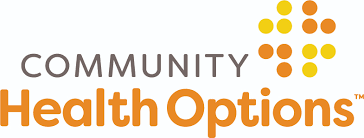Unhealthy eating habits are not uncommon, but when they become unsafe and threaten your health and well-being, then it’s time to seek help. If you’re not sure what the signs or triggers of an eating disorder are, the Crossroads team can help. Binge eating disorder has its own unique set of triggers, and learning ways to manage and ideally avoid them altogether is critical. A significant component of recovery from an eating disorder is learning how to avoid triggers, so you don’t relapse. It’s not easy, especially for women trying to balance work and family life at the same time. Programs like the outpatient eating disorder treatment at Crossroads give women the opportunity to recover from an eating disorder in the comfort of our home-away-from-home environment. Treatment is individually designed for each woman and each situation.
How to Avoid Binge Eating Disorder Triggers
Some of the most common binge eating disorder triggers are:
- Being overly hungry
- Eating when you’re feeling down
- When you’re not physically hungry, eating a lot of food
- Feeling disgusted with oneself, depressed, or very guilty afterward
- Eating alone due to embarrassment about how much one is eating
How do you avoid them?
If your emotions are getting the best of you and you’re in an unhealthy place, distraction can be a great way to avoid turning to food for comfort. It can be as simple as calling a friend and spending time talking, getting some exercise, or practicing some relaxing yoga. Planning your meals, even pre-packaging or portioning, in advance can also be helpful. Then, you have a routine and avoid the temptation if it’s not in your plan. Even when eating out, you can make simple conscious efforts like not having bread when it’s served before the meal or leaving food on your plate.
At home, help yourself by putting junky snacks in hard-to-access spots, so it’s not as easy of a temptation. Keep the healthier options in the forefront of the refrigerator and cabinets. Keeping a food journal can also be helpful in recognizing your triggers in a more obvious way. You can track what you eat, when you eat, where you were, and how you felt to help track patterns surrounding your triggers.
Binge Eating Disorder Treatment
While other eating disorders center around restricting food intake, a binge eating disorder involves a person’s inability to control how much they eat. Before seeking treatment for an eating disorder of any kind, it’s essential to ask yourself some tough questions about whether or not you’re truly ready to make a change. Recovery is possible, but it takes hard work, dedication, and time.
If you think you might have a binge eating disorder, Crossroads can help. Our eating disorder treatment program offers women the opportunity to recover in a supportive environment with the help of professionals. Treatment is tailored to meet the individual needs of each woman, and we offer a variety of services to support you on your road to recovery. Crossroads offers a fully integrated model of care that addresses co-occurring eating disorders and substance use disorders. We provide both residential and intensive outpatient programs (IOP). Our team can walk you through what option may be best for you.
Crossroads Offers a Safe Environment for Binge Eating Disorder Treatment
At Crossroads, we believe that a safe, secure, and home-like setting is the best environment for women to recover in. It allows them to feel more relaxed and comfortable while recovering from an eating disorder or dual diagnosis. Our beautiful campus in Maine offers all of the amenities of home while receiving treatment for women by women. Our caring and compassionate team is led by women who understand the unique challenges of being a female battling an eating disorder. Give us a call anytime at 877.978.1667 to learn more about binge eating disorder triggers and how to manage them.

















